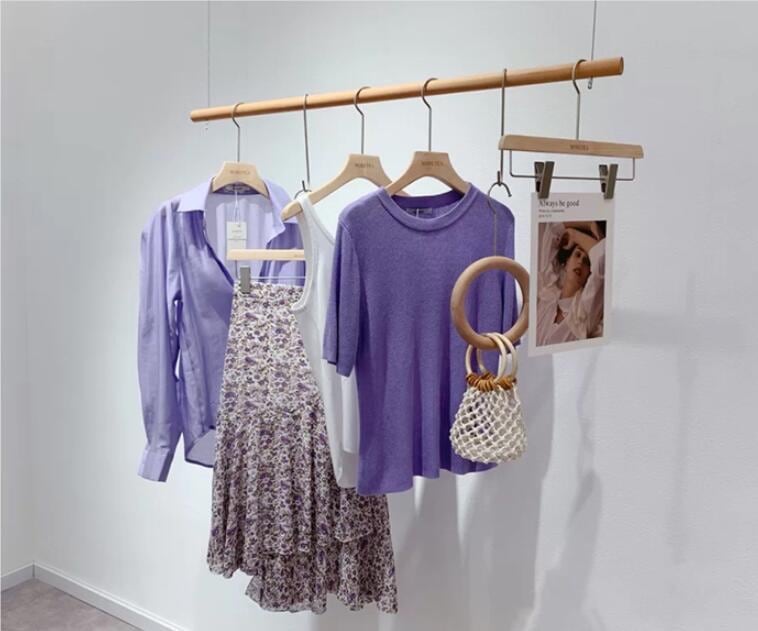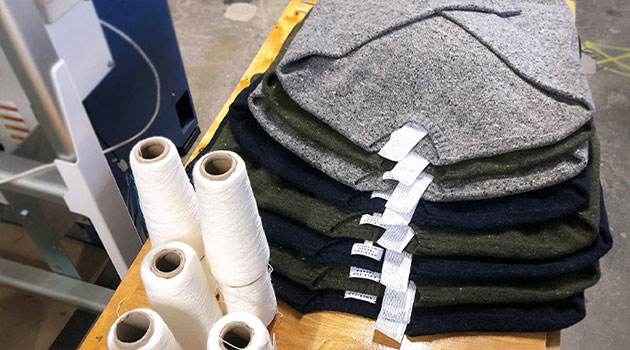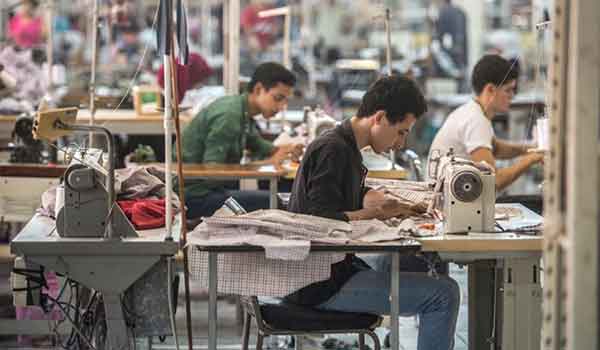Pakistan’s textile and clothing exports grew by 4.88% year-on-year to $6.04bn between July to November FY21 compared to $5.76bn in the same period last year, data released by the Pakistan Bureau of Statistics (PBS) showed yesterday.
In November, export proceeds were up by 9.27% from a year ago. In October, export proceeds were up by 6.18% and in September, they grew by 11.03% while a decline of 15% was recorded in August.
In the first month of the current fiscal year, exports recorded a robust increase of 14.4% on a year-on-year basis. The rebound in exports of textile and clothing is the outcome of a series of incentives to support exporters to meet the challenges in the wake of the pandemic and disruption in supplies.
The demand for country’s exports had collapsed in months following March due to the Covid-19 pandemic, while there has been a gradual improvement since June from international buyers.
Adviser to PM on Commerce in a tweet said that in November, the exports of cotton yarn declined by 25%, raw leather by 21%, and cotton fabric by 12.2%. “This is an indication that exports of low value-added products are decreasing and we are moving towards more value-added exports”, he said while adding that “I urge our exporters to keep pursuing this policy.”
The PBS data showed that ready-made garment exports edged up by 4.36% in value while plunging in quantity by 44.64% during July to November this year from a year ago. Exports of knitwear increased by 14.34% in value and 32.35% in quantity; bedwear exports were up 12.28% while dipped 7.95% in quantity.
Towel exports went up 14.24% in value and 3.79% in quantity, whereas those of cotton cloth dipped 8.73% and 31.78% in quantity.

Among primary commodities, cotton yarn exports plunged by 37.34%, yarn other than cotton by 16.69%, made-up articles – excluding towels – was up 15.53% and tents, canvas and tarpaulin increased by a massive 58.05% during the months under review.
Textile machinery imports dropped by 6.07% during the first five months of current fiscal year – a sign that no expansion or modernisation projects were taken up by the industry in the given period.
Petroleum imports declined 22.78% in the first five months (July-November) to $3.94bn, compared to $5.11bn over the last year, the PBS data showed.
Of these, petroleum product imports were down 16.51% in value in the first five months’ despite increasing by 54.42% in quantity.
Similarly, import of crude oil dipped 27.01% in value, but posted a growth of 14.78% in quantity during the period under review while those of liquefied natural gas fell by 34.73% in value.
On the other hand, liquefied petroleum gas (LPG) imports jumped 52.06% in value in July-November largely to plug a shortfall in local production.

Machinery imports went down 5.78% to $3.37bn in the first five months from $3.58bn last year. The decline in imports was recorded in almost all kinds of machinery except power generating machinery, office machinery and mobile phones.
The power generating machinery imports went up 21.73% in the first five months mainly due to revival of power projects under the China-Pakistan Economic Corridor and office machinery increased by 0.7% during the months under review.
In the telecommunication sector, imports surged by 31.32% on the back of mobile handsets arrivals which were up by 45.26%. This was the result of a crackdown on smuggling and doing away with free imports in baggage schemes. Import of other apparatus fell by 6.39%.
The overall transport group witnessed a growth of 13.92%. This growth was mainly driven by an increase in imports of road motor vehicles (build unit, CKD/SKD) and CBU during the months under review.
An increase of 60.36% was seen in imports of textile group – raw cotton, synthetic and artificial silk yarn.
Overall food group import jumped by 44.53% to $3.01bn during the first five months this year as against $2.08bn from a year ago. The government is importing wheat and sugar to bridge local shortages. The import of almost all essential food products such as milk, wheat, dry fruits, tea, spices, palm oil, soybean oil, pulses and sugar witnessed growth during the months under review.

Pakistan to increase textile exports to $25.3bn by 2025
The draft of Pakistan Textile Policy for 2020-25 with four tier strategy and 21 recommendations is all set to be pitched any time before the ECC (Economic Co-ordination Committee) for approval.
It will try to increase the country’s textile exports target by 2025 to $25.3bn and $50bn by 2030.
It was $13.33bn in 2018.
The Pakistan Textile Policy draft also narrates a clear roadmap to achieve the textile export targets along with vision to fully utilise the potential of home-grown cotton augmented by manmade fibre/filament to boost value-added exports and become a major player in the global textiles supply chain.
The draft of Textile Policy also spells out its the objectives which include: Restoring profitability of cotton farmers by increasing cotton yield, improving quality of cotton and decreasing cost of production for the farmers; strengthening manmade fibre/filament sector to make this chain internationally competitive and export-oriented; regionally competitive energy pricing fixed for five years; prompt sales tax refund system; abolition of zero-rating has created serious liquidity crisis for exporting sectors as the current refund system is soaking up market liquidity and is not working; long-term financing facility for the entire textile value chain; revival of impaired textile capacity and introduction of bankruptcy law and establishment of Textile clusters and Export Processing Zones with plug and play facilities.

It says that the global textile trade that stands at $837bn had an average growth rate of 0.1% over the last decade.
When it comes to the global market for textile sector exports, it is dominated by China, which accounts for over 32% of textile sector exports, valued at $266bn.
Presently, Pakistan’s share is 1.6% in the world textile trade, which will be increased to 3% by 2025.
The world textile export that stands at $837bn will reach $843.35bn.
The textile export growth comparison of Pakistan and regional peer countries shows that our regional competitors have surpassed Pakistan manifold.
Pakistan was once a leading player in textile trade but over the last decade, our textile sector growth has remained dismal owing to several policy limitations and lack of enabling environment necessary for industries to flourish.
Two decades back, Pakistan’s textile exports were ahead of its regional peers like Bangladesh, Vietnam and Cambodia. In 2003, when Pakistan’s textile exports were $8.3bn, Vietnam’s textile exports were $3.87bn, Bangladesh’s were at $5.5bn. Now Vietnam is $36.68bn and Bangladesh is at $40.96bn.

The textile policy draft argues saying that the essence is that if these countries were able to achieve record growths in this short time period, the goal of reaching $50bn of textile exports in next 10 years for Pakistan is attainable, subject to strict implementation of Long-term Textile Policy.
Mentioning about the roadmap to export growth, it mentions that the ultimate goal of export-led growth is poverty reduction and enhanced welfare of Pakistan’s citizens.
Rapidly growing exports and millions of new jobs created, along with skill upgrading, will increase productivity and wages, which over the long term is the only sustainable way to improve living standards.
Furthermore, an ambitious strategy has been formulated to move from low value added semi-processed textile exports to high value-added garments and fashion articles.
A growth rate target has been set starting from 10pc in the first year of FY20 and gradually adding up to 13% in fifth year would achieve almost $25bn exports in the first phase of five years and for the second phase of six years 2025-30, growth rate of 15% to 16% on compounding basis be taken to achieve the target of $50bn exports.
The graphs and tables mentioned in the Textile Policy show that growth in textile exports in FY20 will be at $14.66bn, in FY21 $16.13bn, in FY22 $17.90bn, in FY23 $20.05bn, in FY24 $22.46bn and FY25 the textile exports will be at $25.38bn.
And summarily in the next five years, from 2025 onward to 2030, the textile exports will be at $50.15bn.
It also highlighted the investment required to achieve the export growth target, saying that Pakistan’s investment-to-Gross Domestic Product (GDP) ratio has been hovering around 15pc while countries like China, India and South Korea have maintained the ratio above 30pc to put their respective economies on a sustainable path And to improve job creation, productivity and exports, investment-to-GDP ratio, the Pakistan Textile Policy draft says, should be raised to at around 20%.
To achieve the targeted exports, business-friendly policies should be ensured for the industry to grow and further achieve increased targets.
“Our industry cannot achieve any ambitious target within a short period of time since there are various complicated issues, including the development of infrastructure which hamper growth,” it says.
The draft also comes up with 21 recommendations to achieve the textile export of $25.3bn by 2025 and $50bn by 2030.
It asks for the continuation of the provision of RLNG at $6.5 per MMBTU and electricity at 7.5 cents per unit, which is at par with energy cost of exporters of regional competitors such as Bangladesh, Vietnam and India for growth in exports.
The provision of energy at the said cost would ensure Pakistan’s products in the international market at competitive rates. It advocates for the regionally competitive pricing for the whole textile chain with the removal of implementation hurdles. On the front of better cotton availability, it also urges the government to ensure the acquisition of high-yielding seed technology from international sources with restructuring of R and D on modern lines.
It also recommends the removal of non-tariff barrier and duties stressing facilitation of land routes. And to avoid the contaminated cotton, it also suggests to the government to place ban on the use of Polyethylene film cotton-picking bags.



















